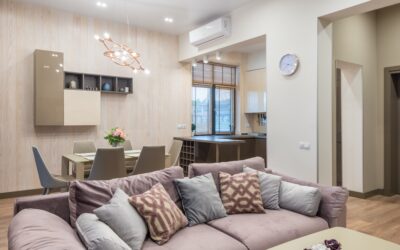When designing rooms, the color palette is one of the most complex aspects to nail. The room looks cheap and messy when it’s overdone with a bunch of non-contrasting shades. However, when done right, the color palette can beautify the space while adding chicness to the look.
If the color palette of the details doesn’t work, even the most expensive rug will look like a mess. Though tricky, designing a room by nailing the color palette is doable.
These are some of the most common color palette mistakes people make and steps to get it right to instantly transform the air in your space and make your place look trendy.
Overdone Bold Color Palette
Yes, you will find numerous articles on the website that encourage you to mix and match bold colors. However, in design, there’s an aspect of balance or “the sweet spot” one must know how to nail to attract the onlooker with a shade or two.
When the bold colors aren’t ideally grounded with a stand-out piece and are instead scattered all around the room. The colors lose their appeal and end up looking like a painter’s apron mess.
No Variation
Variation is the aspect of design that keeps the onlooker going from one piece to the other while taking their sweet time to take in all of the visual aspects that appeal to the eyes. Apart from that, it adds depth and dimension to the design.
Going with the same shade for all of the wooden furniture or maybe overdoing the use of velvet with no other cloth texture is what strips away the interest. Variation can also be assessed by looking at the colors. Avoid the mixing and matching of dark and light shades or using a single shade across the room like furniture and art pieces, which won’t create a balance; they’d make it dull.
Neutral Failure
Numerous enthusiasts struggle with nailing neutrals, thinking that going monotonous will give their space sophistication when the monochromatic style is what they must opt for. What’s the difference between the two? As previously discussed, variation.
The entire room filled with a single shade of brown would end up looking so plain that you may want to close your eyes. Flat. That’s the word one wants to avoid but is likely to keep hearing if they fail to nail neutrals.
Steps To Get The Color Palette Right
Don’t worry if you’re guilty of making any of the above mistakes. But actual knowledge comes with experience. Hence, follow the steps given below the next time you’re designing using a tough color scheme and add liveliness to the space:
Step 1:
Research and save any ideas that appeal to you. Then go through all the ideas, preferably across the same plane, to see the consistencies within your choice. Which style element that’s common in all the ideas you’ve saved appeals to you? Draw them out because they’ll be your signature.
Step 2:
Look for the colors you’ve mostly chosen and try to find the perfect combinations you can make using those colors to give the space a specific feeling. You can consult some color psychology tricks to nail this step.
Step 3:
Once you have 3-5 colors you want to accommodate, look for particular design pieces with the same color scheme, such as an art piece or a Persian rug. You can also look for pieces based on the anchor color.
Step 4:
Once you have these elements picked out, narrow your options and choose only one to two items that work well to be signature pieces, matching the color you’re going for.
Step 5:
Use the remaining colors for small items around the room. An artistic vase or upholstered cushions could work well to bring a pop of color to the room.
Once you have all these decor items, move things around and look for the sweet spot for a harmonious look.
Final Thoughts
Nailing a color palette can be tricky, but the step is crucial in your design process as it can make or break the look you’re going for. Once you have experimented enough, your eyes will be trained to acknowledge the items that don’t work and how you can fix them. Hope these steps help, but there’s only one way to know: designing.





